If you’ve ever wanted to know how to fly a drone, you’re not alone. Drones are becoming increasingly popular, and many resources are available to help you get started.This article will provide a basic overview of how to fly a drone, including information on drone safety and regulations.
How Do You Operate A Drone? Comprehension of the Drone Controller
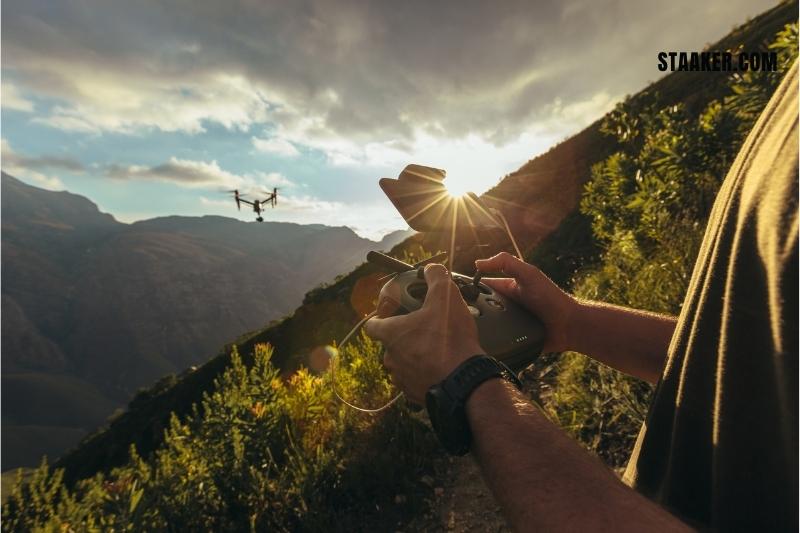
- Drone with 1080P Camera: A...
- Play Longer: The FPV drone has...
- 4k HD Camera: This drone is...
- Smart GPS Functions: The drone...
- Product Includes: This mini...
- Simple Spider Drone for Kids:...
- Drone with 1080P HD Camera for...
- Beginner-Friendly: enjoy...
- Adjustable Anti-Shake Camera:...
- 5G WiFi Transmission: Equipped...
- 1080P HD Camera Adjustable FPV...
- Multiple Functions for Kids...
- 1080P HD Camera Adjustable FPV...
- Foldable Drone, Full...
- Great Drone Toys for...
- 1080P HD Pictures and Live...
- HD 1080P Camera: The drone...
- Easy to Use: With one-key...
A drone is piloted and connect via a remote controller or transmitter. This convenient device resembles gaming or toy remote controls because it has buttons and joysticks with multiple functions. Professional models can be daunting, and users may take longer to utilize all of their features. No matter how complicated a drone is, the left and right sticks are controlled by the pilot’s thumbs, and most models have the same features and capabilities. The user can push or pull the control sticks to move the drone up, down, left, right, and occasionally diagonally. The four primary purposes and most crucial components of any drone’s controller are as follows:
- Yaw
- Throttle
- Roll
- Pitch
The left stick controls the yaw (rotation) and the throttle (altitude).
What is yaw?
Yaw refers to the drone’s rotation in a clockwise or counterclockwise direction. When the left joystick is pushed along the x-axis (left and right), the drone will rotate clockwise or counterclockwise. This allows the operator to position the drone to face different directions without having to move it.
Throttle
The throttle controls the power supplied to the drone’s motors, leading to faster or slower flying speeds. The drone’s altitude can be altered by moving the left joystick along the y-axis (up and down). Users frequently manage the throttle during flying, typically in conjunction with the operations of the right stick, so it is essential to become familiar with this function.
Correct Stick: Roll and Pitch
The right stick controls the roll (side to side) and pitch (up and down) of the drone along the x-axis (forward and backward). Understanding Roll Roll refers to the movement of your drone to the left or right. When the right joystick is pushed along the x-axis (left and right), the quadcopter will fly and “roll” to the left and right. This is useful for avoiding trees and other obstacles without adjusting the drone’s altitude or y-axis location.
What is pitch?
Pitch refers to the forward or reversed tilt of your drone. The drone can be moved forward or backward by pushing the right stick along the y-axis (up and down). It may appear simple, but using this with the throttle and the drone facing you instead of the other way around makes it more difficult, so the experience is required.
Pre-Light Inspection List
Following a pre-flight checklist helps protect you and your drone. Use the following checklist before every flight:
Weather & Site Safety Check
- The probability of precipitation is less than 10%
- Wind speed less than 15 knots (less than 20 mph)
- Minimum cloud base of 500 feet
- Minimum visibility of 3 statute miles (SM)
- When flying at dawn or dusk, verify civil twilight hours.
- Create zones for takeoff, landing, and emergency hovering
- Electromagnetic interference potential?
- Look for towers, wires, buildings, trees, and other obstacles.
- Check for pedestrians and animals and, if necessary, construct a safety perimeter.
- If present, discuss the flying mission with other crew members.
Inspection Of The Visual Aircraft/System
- The registration number is prominently visible and legible.
- For anomalies, examine the aircraft’s frame, propellers, engines, and undercarriage.
- For anomalies, examine the gimbal, camera, transmitter, payloads, etc.
- The Gimbal clamp and lens covers are removed.
- Clean the lens using a microfiber cloth
- Attach the propellers, battery/fuel source, and SD card/lens filters
Powering Up
- Turn on the remote and launch the DJI Go 4 app.
- Start aircraft
- Confirm the connection between the transmitter and the aircraft
- Position transmitter antennas toward the sky
- Confirm the display panel / FPV screen is operating correctly.
- As required, calibrate the Inertial Measurement Unit (IMU).
- Calibration of the compass before each flight
- Check the fuel and battery levels on the transmitter and aircraft.
- Confirm that the UAS has collected GPS location from a minimum of six satellites.
Taking Off
- Takeoff to eye-level altitude in around 10 to 15 seconds
- Check for any imbalances or anomalies.
- Listen for strange sounds.
- Pitch, roll, and yaw to test the reaction and sensitivity of the control system
- Examine software for electromagnetic interference and other warnings.
- Perform one more inspection to ensure the safety of the flight operations area.
- Continue flying mission
Instructions on Learning to Fly a Drone as a Beginner
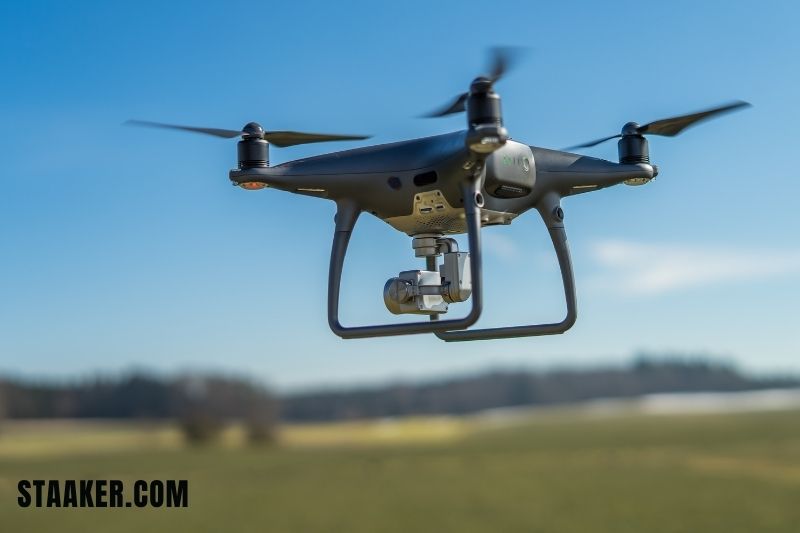
After being acquainted with your drone and its basic controls, it is time to put them to use by piloting the drone. You can follow this step-by-step instruction for a fun and safe drone flying experience that will lead to successful drone photography.
- Find a Free Space
- Position the drone
- Install the transmitter
- Takeoff
- Hovering
- Rotating
- Practice Techniques
- Please note: Flysky FS-i6X is...
- Bidirectional Communication...
- RC controller Fast response,...
- FS-iA10B Output PWM 10CH / PPM...
- 1)Reliable, interference free...
- 2).Associated with a High...
- The 2.4G AFHDS2A has stable...
- If you need to use 10 channels...
- 1)Multi-channel Hopping...
- 2) Unique ID Recgnition System...
- 10 CH TRANSMITTER--The number...
- COVER MORE MODELS--It has 2...
- Associated with a High...
- Reliable, interference free...
1. Secure an open space for practice
If you already own a drone or are considering acquiring one, you likely have a practicing location in mind. It can be any open outside location that is safe and devoid of barriers, so you don’t crash the drone into a tree, a wall, or even other people. Additionally, ensure that the location permits the use of drones to avoid breaking any laws.
2. Position the uncrewed aerial vehicle
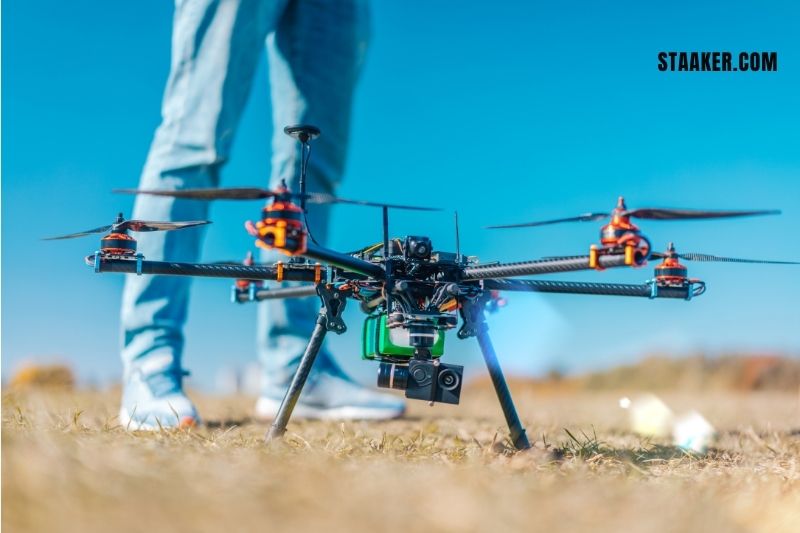
First and foremost, locate a suitable takeoff location. Ensure that the drone is positioned according to the manual, preferably in front of you on a flat surface, with you and the drone facing in the same direction. Perform this procedure before every flight, and do not attempt anything else unless you have sufficient confidence and expertise in piloting your drone.
3. Connect the transmitter to the drone
Before the flight, you must remember one more thing: sequencing. Here, we begin with the phases requiring practice. Before turning on the transmitter, fully depress the throttle. Turn on the transmitter, and then attach the battery to the drone. This is a crucial procedure that must be followed before and after takeoff. After your flight, detach the batteries from your drone and power down the transmitter.
- Before Takeoff
- Reduce throttle position
- Turn transmitter ON
- Connect the battery to the drone
- After Landing
- Disconnect the drone’s battery
- Turn transmitter OFF
4. Rehearse takeoffs and landings
After completing the preceding pre-flight preparations, you can slowly raise the throttle (left stick) and observe the drone take off. With the roll and pitch instructions, maintain position without forward or lateral movement (right stick). After successfully launching the drone a few feet above the ground, you should attempt to land it as smoothly as possible. This time, maintain stability and gradually depress the throttle (left stick) until it hits the same place on the ground.
5. Rehearse loitering
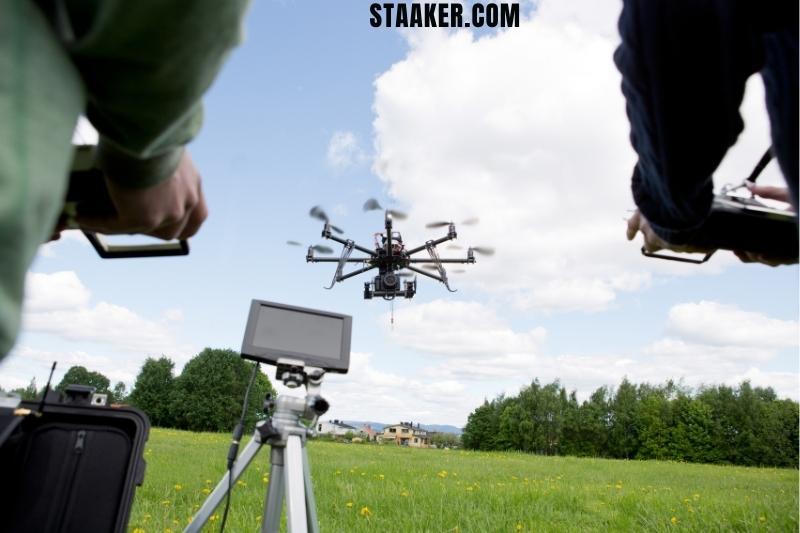
The following skill you will practice is hovering. Lift off (step 5) a few feet above the ground and maintain as much stability as possible with the drone. It will appear tiresome to novices since it needs concentration, but repeating this will enhance your flying skills (especially at the beginning and conclusion of each flight session) and keep your drone safe. Focus on mastering these fundamental moves (takeoff, balance, and landing) first since it will make more advanced flying skills easier to execute in the future.
6. Exercise rotation
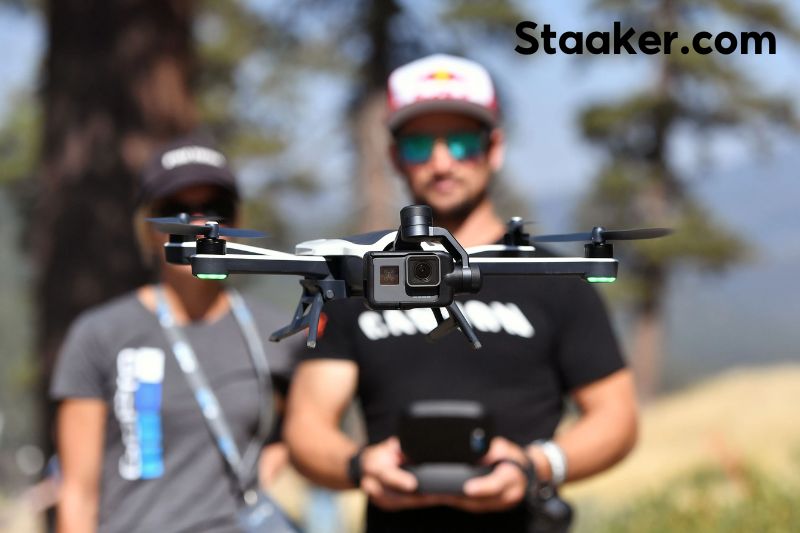
Using the left stick’s yaw control to rotate the drone is another crucial technique you must master. Now launch the drone, hover, and slowly move the left joystick to the right or left until the drone faces you. Due to the need to pay strict attention to the drone’s direction, particularly its front and back, many find it challenging initially, but practice makes it much more straightforward. Create a mental image of yourself inside the drone, piloting it, to assist you in controlling it regardless of its orientation. This is how seasoned pros remain on course regardless of how much the drone spins and turns, and it enables them to visualize how to fly the drone to obtain award-winning aerial images. Don’t worry if you still don’t get it on your fifth attempt. Many fail even on their eleventh attempt. You must be gradually (but surely!) becoming more accustomed to directing the drone’s behavior.
7. Apply These Basic Drone Techniques
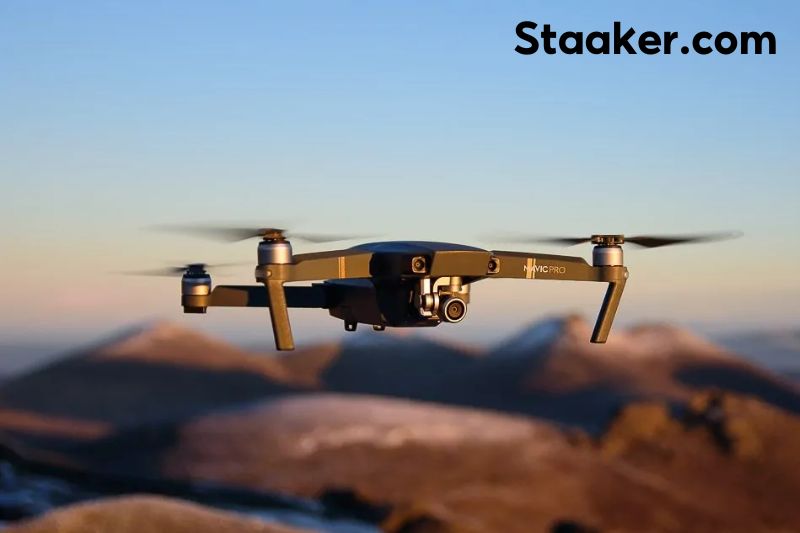
Now that you have mastered the basic controls and movements, it is time to consolidate your collected knowledge and expertise into a single session. This is also where you can finally move the quadcopter using the right stick. Here are some examples of controls and maneuvers you can try once the drone is in the air: By moving the drone forward and backward with the pitch control (right stick) and then left and right with the roll control (left stick), you can go along parallel paths (right stick) Utilizing the pitch and roll controls, draw a square (right stick) Fly forwards and backward in a parallel line with the drone facing the flight direction by moving the drone forward with the pitch control (right stick), halting, rotating the drone 180 degrees until it is facing you, then moving the drone forward again until it reaches its initial position. Draw a square by pushing the drone forward with the pitch control (right stick), halting, rotating it 90 degrees to the left or right with the yaw control (left stick), and repeating all three actions until the drone returns its starting position. Draw a circle with the yaw (left stick) and pitch (right stick) controls (right stick)
- APPLICABLE : Quadcopter drone...
- 2600MAH 3.7V: Drone lithium...
- Wide Compatibility: The 3.7V...
- Size and Weight: This battery...
- Compatible : RC drone battery,...
- Long Battery Life: Remote...
- Suitable for E88 E88PRO E88MAX...
- Battery weight: 22g/1PCS,...
- Suitable for E88 E88PRO E88MAX...
- Battery weight: 22g/1PCS,...
- 🔋Specifications: XH2.54...
- 🔋USB charging cable: The...
Flying Drone Tips and Tricks for Beginners
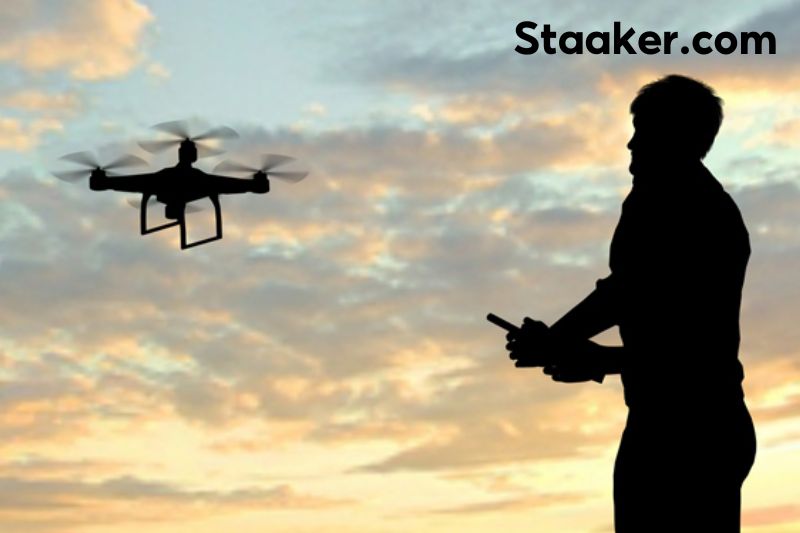
Essential Tips for Drone PilotingDrones can be fun toys, but if they are not used properly, they can cause property damage or even injure people and animals. Being a responsible pilot means knowing how to safely and correctly control your drone.
1. You will soon get used to the controls
Although we’ve covered the basics of your transmitter’s controls, it’s not enough. You will eventually get to know your controller and not have to glance down at it every few seconds. You’ll need practice until your controller is no longer a distraction. Then, focus on the mental image of yourself as the pilot. You will be able to execute various maneuvers as quickly as your limbs can move. Instead, it would help if you focused on creating high-resolution, well-composed aerial imagery. The graph below illustrates how propellers react during quadcopter movements. It will help you understand how your quadcopter moves in particular directions.
2. Keep your drone close
It’s normal for beginners to be excited about implementing their new skills. You should also make sure that the drone is within easy reach. It is essential to be aware of your drone’s limitations, especially the limits at which it can transmit data. You don’t want to lose communication with the controller. Advanced drones can return to their original position and land on their own, although it is not guaranteed that the drone will avoid obstacles during auto-landing. It is best to keep the drone close enough to you to see its orientation relative to your location.
7 Drone Safety Rules That You Must Know
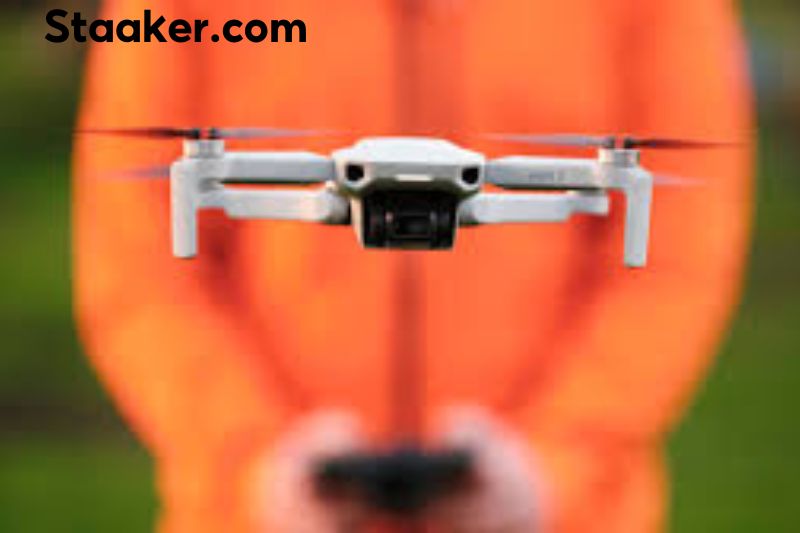
There are many regulations and rules when it comes to flying a drone. This is especially true if you’re flying to foreign countries. The FAA has published a list of safe drone flying rules that all drone pilots should follow, whether they are flying commercially or recreationally. They are not permitted unless you have permission or permits (except for the last).
1. Fly no higher than 400 feet
This is possible, even if you are not allowed to fly in restricted areas. It is dangerous to fly above 400 feet, especially if you are doing a commercial job. Depending on where you are filming, this can put wildlife and aircraft at risk. No matter how amazing the shots may look, keep your distance to 400 feet.
2. Your drone should never be allowed to fly beyond your visual sight-lines.
This rule goes hand in hand with the first. If you fly above 400 feet, your drone will not be visible. The same applies to distance and weather conditions that limit vision.
3. Fly over crowds of people or stadiums.
Privacy is a significant concern with drones. It is important not to fly over crowds, large spaces, or events. Avoid flying over stadiums as they pose safety and security concerns to spectators.
4. Never fly less than five miles from an airport
This is the most important rule on this list. It is strictly forbidden to fly drones within five miles of an airport. Even a tiny drone could cause severe damage to an airplane, which can pose a risk for its crew and passengers.
5. Avoid flying near emergency response areas
Another restriction is not flying drones close to emergency response sites such as an evacuation or natural catastrophe. It is not worth filming footage that could hinder first responders from doing their jobs.
6. Avoid flying near other aircraft
This is a simple rule that should be observed. Even if the drone is not visible, it’s worth bringing down. It is always safer to be safe than sorry.
7. Never fly while under the influence
Never fly while under the influence. Although this may seem obvious, there are still people who disregard it. No matter how you feel about it, you should not fly your drone if there have been any alcohol-related activities or drinking.
Is Flying a Drone Difficult?
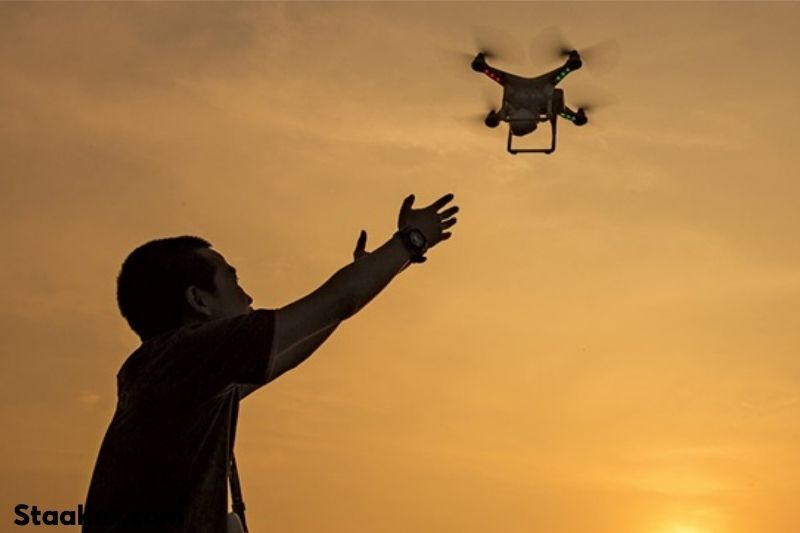
Drone flight requires practice, but it need not be tough. Some drones are more accessible to operate than others, so until you feel comfortable piloting a drone, it’s a good idea to practice on a basic model with straightforward controls in an open area. While gaining expertise and confidence, many novices prefer to train with the assistance of a more seasoned drone pilot who can provide them with tips and beginners’ guides to drones. Start where you feel most comfortable, and after a few sessions, you’ll be flying with confidence. Once you have mastered flying a drone without making any mistakes or causing any accidents, you can upgrade to a more complex model and add photo-taking capabilities to your experience.
Difference Between Height Limit And Range
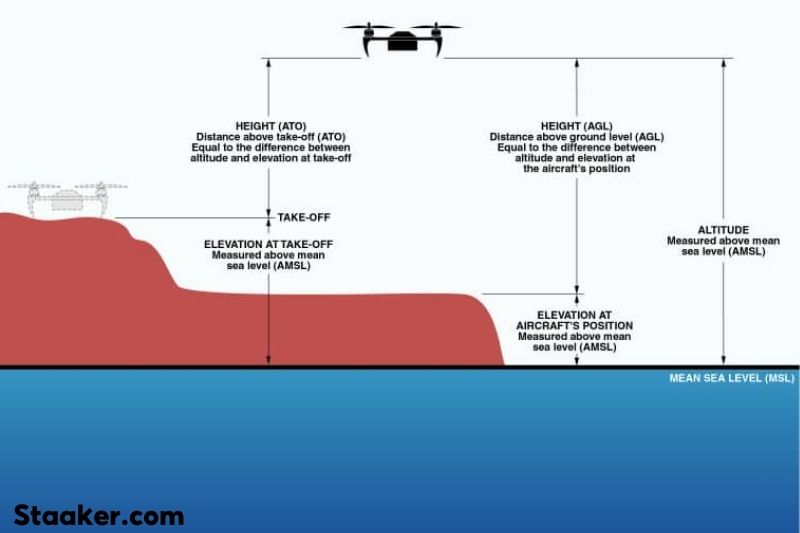
If a drone has a range of 10 km, it does not mean it can fly 10 km high, but if it has a range of 1 km, it will not be able to fly higher than 1 km. Therefore, signal intensity is the single factor limiting distance, but signal strength and air pressure (or air density) and regulation limit height. While it is relatively simple to increase the range of a drone, as demonstrated in this article, the same cannot be said for altitude constraints; as the air gets thinner, there are technical limitations.
- High Dynamic Range Video +...
- Unbelieveable Image Quality:...
- 4K Ultra HD action camera:...
- Smooth Stabilization: Built-in...
- Ultra Wide = Ultra Immersive:...
- Pro-Quality 4K60 Video: HERO13...
- 27MP Photos and 5.3K Video:...
- HyperSmooth 6.0 Stabilization:...
- 5K Video - Shoot stunning...
- 20MP Photo with SuperPhoto -...
- Revolutionary New Image...
- Unbelievable Image Quality:...
- 4K30fps Video & 20MP Photo:...
- 170° Adjustable View Angle...
- REVOLUTIONARY PROCESSOR:...
- HIGH-RES PHOTOS plus VIDEOS,...
How High May A Drone Legally Fly?
Let’s begin by explaining the difference between range and height restrictions. When a drone has a range of 10 kilometers, it does not mean it can fly at an altitude of 10 kilometers. However, if its range is 10 kilometers, it will not fly higher than 10 kilometers. Signal intensity is the sole determinant of distance. In contrast, two things limit altitude: signal intensity and air density and control.
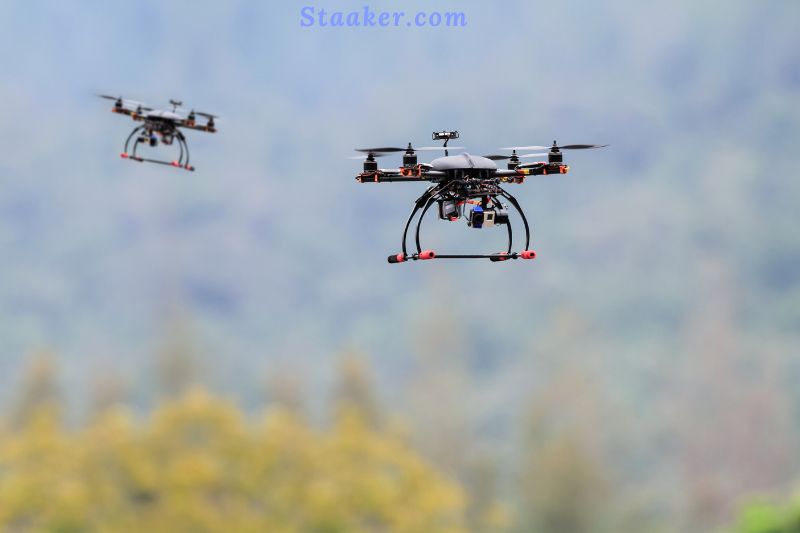
The legal constraints depend on the norms and rules of your region. According to Popular Mechanics, regulation limits the maximum height in Europe to 500 feet. In the United States, you will be subject to significantly harsher restrictions, with a maximum altitude limit of 400 feet. Remember that these are the optimal heights relative to your departure altitude, not sea level. In addition, the Federal Aviation Administration (FAA) only permits users to operate a drone within VLOS (Visual Line Of Sight). However, you can petition the FAA and local authorities for a special license or exemption. In case you lose a drone, see the guide to see some tips that can help you find it: How to Find a Lost Drone Without a Tracker?
How Far Can A Drone Physically Fly?
The maximum height a drone can fly is 10 kilometers (33,000 feet), as demonstrated by both military drones and explorers’ YouTube videos. Rotating-rotor drones have a physical range limitation of approximately 10 kilometers (33.000ft). This is because as altitude increases, the air becomes thinner, and there is very little force capable of holding its mass in the atmosphere (pushing the rotor blades). However, this is a dangerous hobby, and you should only fly within the height restrictions allowed by law in your area.
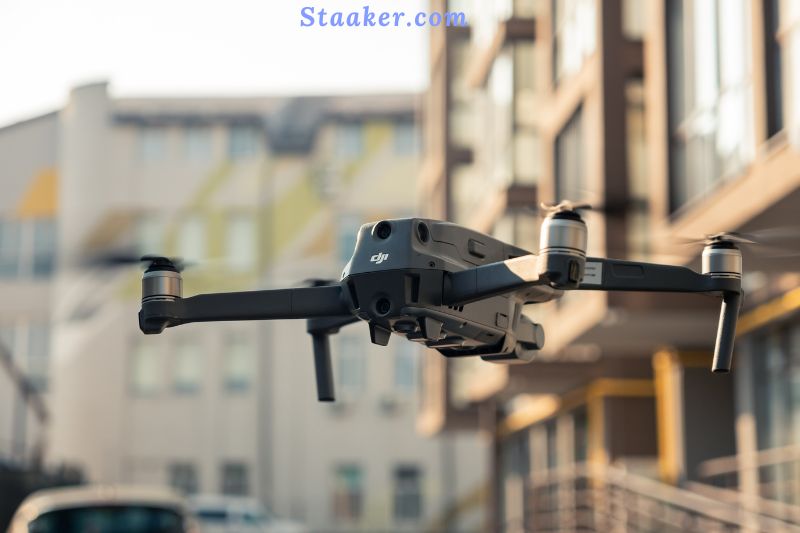
Can You Fly Above 400 Feet?
The maximum altitude for most drones should not exceed 400 feet, which applies to recreational and commercial drone pilots. The altitude of a drone cannot exceed 400 feet above the ground unless it is flown inside a 400-foot perimeter of an object and does not remain airborne more than 400 feet over the structure’s immediate uppermost limit. The rule’s language immediately implies an exception: You are permitted to fly a drone above 400 feet if flying near a (likely) enormous structure. As it does not define object or specify where the 400-foot limit should be measured, there is still considerable ambiguity.
How Do You Remain Within The 400-Foot Limit?
You must comply with FAA regulations and keep your uncrewed aircraft below 400 feet in altitude. We propose setting an altitude restriction of 390 feet to ensure that the drone remains within operational limits. Thankfully, DJI Go 4 permits you to specify a maximum altitude for all DJI drones.
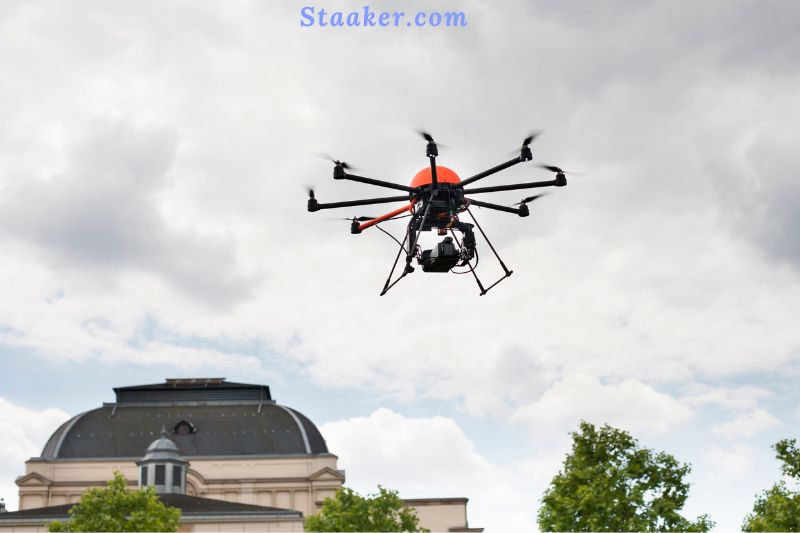
To choose an altitude restriction, you must:
- Open DJI Go 4,
- Login,
- Click the three dots located in the upper right corner.
- Select the drones icon at the top.
- Scroll down to Set Maximum Flight Altitude
- And enter the necessary limit.
Remember that the units of measure are meters. It is recommended that a flight height limit of 118 meters (390 feet) be established. If you are flying from a tall building, you can alter this restriction anytime.
What Are The Ramifications Of Flying Above 400 Feet?
Drones are often forbidden from operating in airspace, avoiding populated centers, flying at night, and using below a 400-foot ceiling height. Due to apparent exceptions and non-compliance, the height restriction for aircraft missions remains a highly ambiguous regulation. As a result, several drone manufacturers have begun installing application restrictions preventing their drones from reaching more than 400 feet altitudes. Are there distinct regulations governing recreational and commercial use?
For amusement reasons
Recreational drones are prohibited from flying in restricted airspace and are restricted to flying below 400 feet in uncontrolled airspace. Although there is still a way to request permission to fly in uncontrolled airspace, the 400-foot rule has not been altered, and no exemption is permitted. Similarly, recreational drone pilots are not excluded from the 400-foot rule.
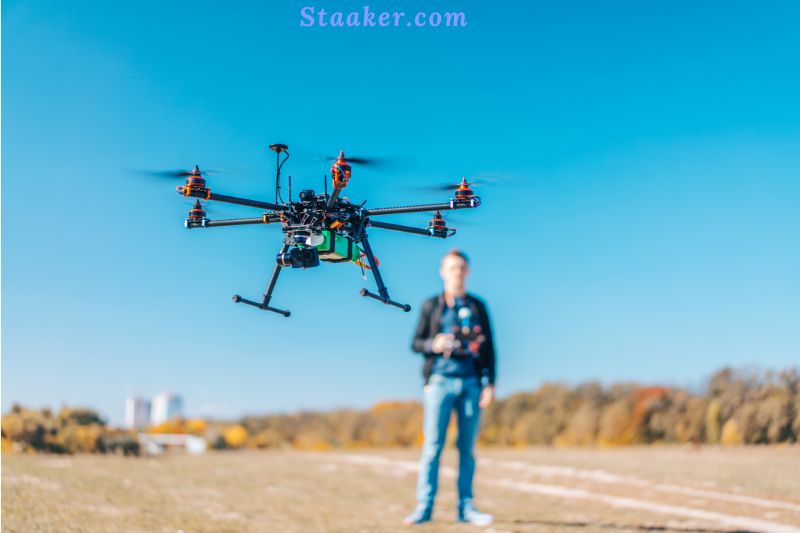
Commercial purposes
The same restriction applies to commercial drones licensed under Part 107, with one crucial exception: pilots are permitted to fly their drone beyond 400 feet while they are within 400 feet of a structure, according to the law. Pilots of commercial drones can now conduct inspections of telephone cables, towers, and industrial gear due to an exception. Additionally, it is argued that drones can still fly around these big structures, allowing them to travel at higher altitudes. Certified drone pilots are also expected to be able to handle such circumstances.
Should You Be Flying Above 400 Feet?
All this discussion begs the question: is there a compelling reason for flying over the 400-foot limitation? Should you fly drones professionally, you will find several drone projects that will ask that you change the default elevation limit in your drone. You may be commissioned to shoot aerial photos of a tower or even inspect the bottom of a bridge. In both these instances, you are flying in proximity of construction which puts you crystal clear regarding legal limitations and airspace security criteria. How about amateur drone slopes? With no related exceptions, they appear to be getting the short end of the pole regarding elevation constraints. On the other hand, the capability to go beyond the 400-foot limit inside the proximity is one of those rights the FAA grants to Part 107-licensed drone pilots if they require the exclusion to provide their drone flight support. On the flip side, recreational drone pilots probably don’t have any business flying about industrial equipment or communications systems, particularly if they don’t have any consent from the owners or operators of the vital pieces of infrastructure. In the end, the 400-foot elevation limitation was set in place in the interest of airspace security. The airspace past 400 feet is enormous, and the odds of running into a different aircraft are astronomically low. Still, the possible consequence of a drone flying right into a human-crewed aircraft could be catastrophic. We are confident that no drone pilot might wish to be the origin of a catastrophe at that scale.
3 Considerations For High-Altitude Flight
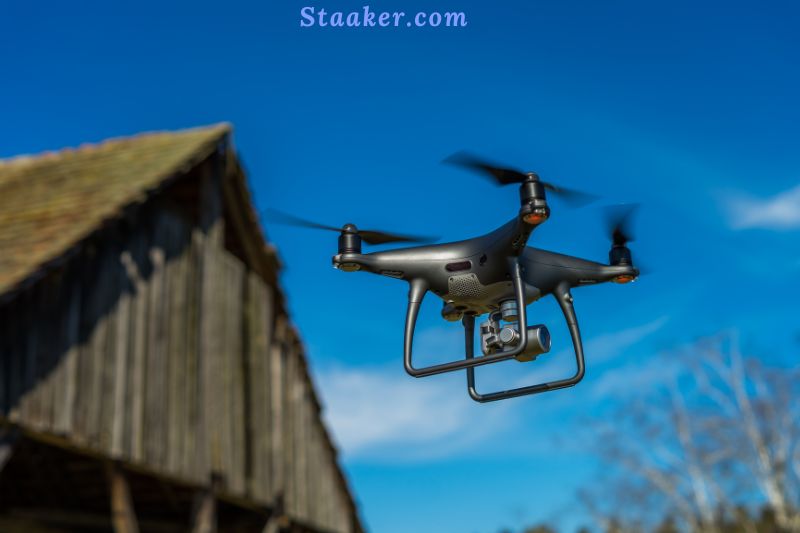
1. Absolute Ceiling
The maximum altitude at which an airplane can maintain range flying is known as the absolute ceiling. At this altitude, the strength of the engines is equivalent to the full force of gravity; consequently, the drone ceases to ascend.
2. Maximum Service Ceiling Above Sea Level
Also considered as a takeoff height maximum. This is the maximum altitude at which drones can continue to fly at 100 feet per minute.
3. Maximum Range
If the drone’s maximum distance (signal-wise) is smaller than its flying capabilities, its height and width ranges will be identical.
5 Highest Flying Drone
1. Autel Evo 2
- 40 minutes of charge
- 9 km range
- 7 km ceiling
- 800m equipment height
2. Parrot Anafi
- 25 minutes of charge
- 4 Km range
- 4.5 ceiling
- limitless height
3. DJI FPV Drone
- 20 minutes of charge
- 10km range
- 6 km ceiling
- 500m equipment height
4. DJI Mini 2
- 31 minutes for
- 10km range
- 4km ceiling height
- 500m equipment height
5. WingstraOne
- 59 minutes of charge
- 10km range
- 5km ceiling
- 2.5lm software constraint
Maybe you need to see this guide: How Much Weight Can The Drone Carry
Beginner Drone Classes
- Check here: https://www.dronepilotgroundschool.com/ to learn more information.
- Improved Auto Hover Allows...
- Eight One-Touch Stunts Are...
- More Fun Than Others -- The...
- User-friendly -- The Altitude...
- Drone & Car 2 in-1 Design:...
- Car Mode: We have equipped...
- MULTIPLE FUNCTIONS: Based on...
- ELECTRIC ADJUSTABLE 1080P HD...
- HD 1080P Camera: The drone...
- Easy to Use: With one-key...
- No Registration Needed - Under...
- 4K Ultra HD & 3-Axis Gimbal...
- Adjustable 1080P FPV Drone:...
- Beginner-Friendly: Perfect for...
- Cool Design: The new shark...
- 1080P Camera Lens with FPV...
FAQs
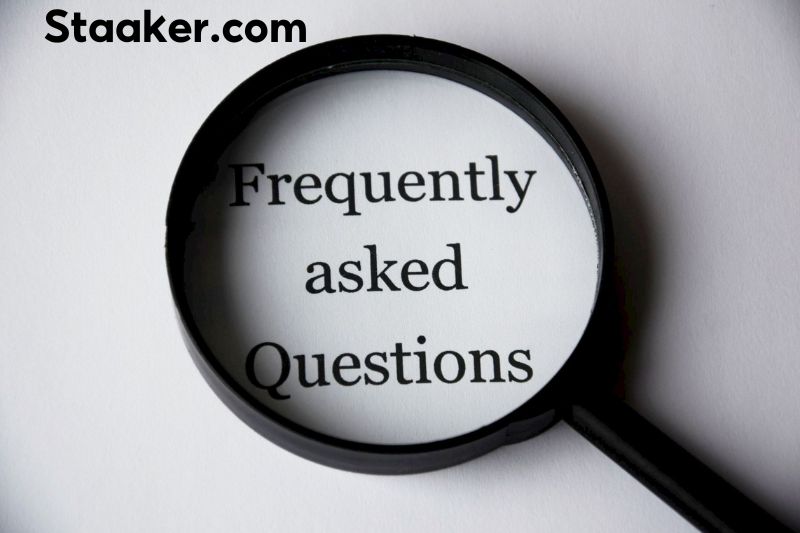
1. Is drone operation complex?
Flying a drone is quite tough, especially for novices with no prior experience with remote-controlled aircraft. Many beginning pilots begin with flight training or flight simulation software. Before flying a drone, it is always preferable to have a firm grasp of the fundamentals.
2. What should you know before flying a drone?
- Important Information Before Flying a Drone
- Register with the FAA online. If your drone weighs more than 0.55 pounds, you must register it with the FAA before its first flight.
- Determine when and where you may fly
- Ensure that you are covered
- Protect your data.
- Learn about commercial restrictions.
3. What should a drone not be used for?
Meanwhile, several FAA regulations have already been implemented, and these outline prohibited drone operations.
- Do not fly over the pool party of your neighbor.
- Avoid flying within five miles of an airport.
- Do not fly above 400 feet in altitude.
- Do not fly beyond visual range.
Conclusion
Flying a drone can be an exciting experience, but it is important to be aware of the safety precautions necessary for operating this technology. In addition, it is important to follow all applicable regulations when flying a drone. This guide provided a basic overview of how to fly a drone, including information on drone safety and regulations to help you get started. Thank you for reading!


















































